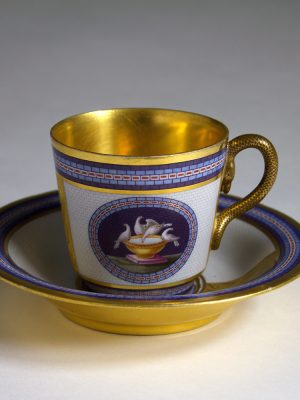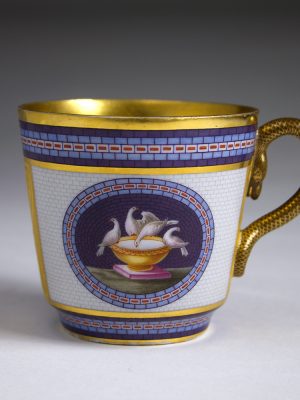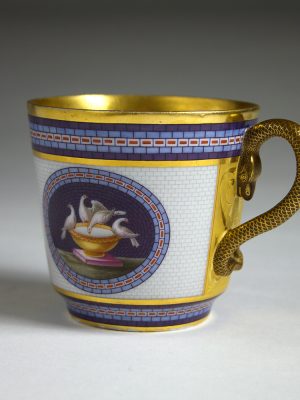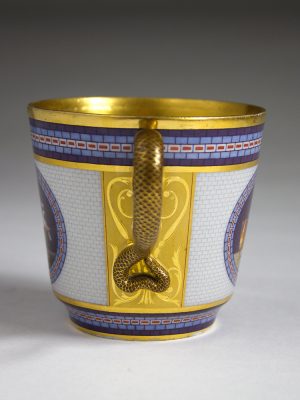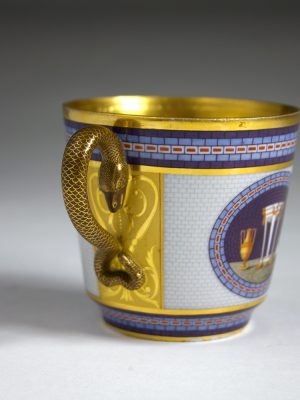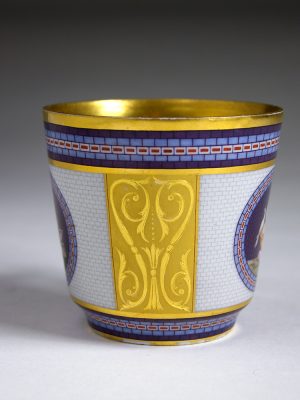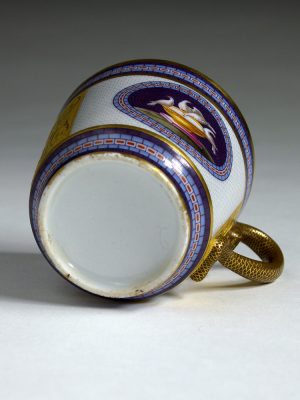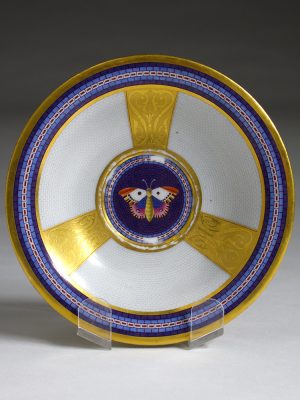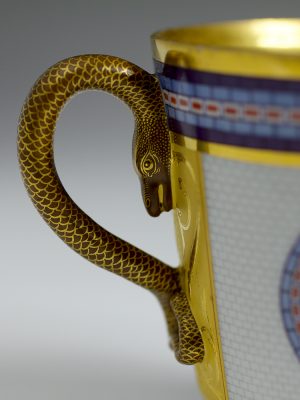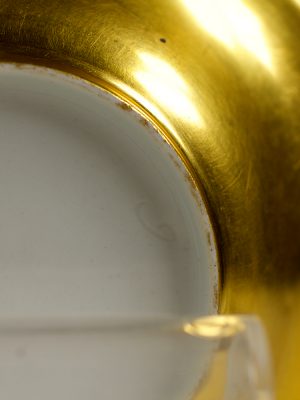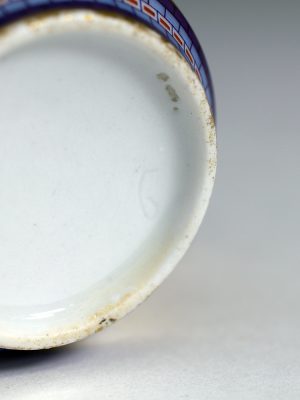Mosaic Pattern Cup and Saucer. Gardner Porcelain Factory. Russia. Circa 1800.
The Gardner Factory was established in 1766 by Francis Gardner, a transplanted English entrepreneur, with the permission of Catherine the Great. Gardner was the first of the great Russian private porcelain factories. The production was of such high quality that it was considered equal to that produced by the Imperial Porcelain Factory (IPF).
Gardner was sometimes employed to make replacements for or complete IPF sets when that factory was unable to meet imperial orders, which would be the situation here.
A similar cup, without the matching saucer, was illustrated for the first time in a 2012 catalogue. That cup, which was made by the IPF, is described as the only known example from the set to have survived to the present day.
On one side of the cup is an enamel painted version of a mosaic known as the Capitoline or Pliny’s Doves, which was uncovered during excavations of Hadrian’s Villa in 1737. On the other is a group of three ‘antiques’, the source of which remains elusive but may also be a feature of the same second century structure, as is the case for the moth that adorns the interior of the saucer.
The small pieces of stone that made up the ancient mosaics are painstakingly depicted in the hand painted enamel work covering the outside of the cup and interior of the saucer. The gilt work is of superb quality, done in the old style with heavy gold leaf, selectively burnished to appear as two contrasting colours. The surface of the gold on the inside rim reveals that the area underneath was not glazed. This indicates that there was once a lid for the cup, now lost, which was set in place during the firing. Countless hours of highly skilled labour were involved in the production of this penultimate cup and saucer.
Each of the pieces has an incised ‘G’ to the base, a mark associated with the Gardner Factory.
Cup 7.4 cm X 10.1 cm X 7.9 cm
Saucer 15.5 cm X 3.2 cm
For comparison see “Antique Style in Russian Imperial Porcelain in the Second Half of the Eighteenth Century”. St. Petersburg. The State Hermitage Publishers 2012. Pages 174-177.

